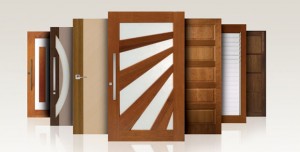Exterior Door Services Richmond Hill
Exterior Door Services Richmond Hill will take you through all door options that are as diverse as the customers that buy them. Unfortunately, these options are not explained well by retailers – so you need to call Exterior Door Services Richmond Hill to investigate before purchasing them. The keys to buying the right doors, at the right price, is understanding the pros and cons to each style, so call Exterior Door Services Richmond Hill to help. Call us 24/7!

Exterior Door Services Richmond Hill team knows that door pricing varies greatly based on design and material selection. Retailers will be more than happy to design a beautiful door for you! However, they do not take into account cost-effectiveness, so call Exterior Door Services Richmond Hill to explain more about doors. Pricing is based on two factors: the type of material and the design. Exterior Door Services Richmond Hill will help you choose the right door for your needs and budget. Wood doors are the most expensive, followed by fibreglass and steel. Doors can be extremely elaborate with textures, hinges, handles, transoms and sidelites. Each option adds to the overall price. If you add in the cost of side and patio doors, the price could jump to much more. Fibreglass offers an alternative to classic wood, with the benefit of moisture resistance and textures. You can order them with wood-grain patterns, pre-finished in various colours, and with a host of hinge choices. Steel doors tend to be used as side doors or as an entry-level door. They hold paint well, but can dent easily which makes them less appealing than wood or fibreglass. The key to selecting the right door is analysing your budget and the home’s architecture.
Door design plays a crucial role in pricing. A standard entry door – in wood or fibreglass – will generally cost less than $1,000. However, if you add two sidelites and a large transom with custom glass, the price jumps considerably. If your budget cannot sustain this expense, it does not mean you have to down grade to a lesser material. Changing the design can make all the difference in the world! Consider removing one sidelite (which will in turn make the transom smaller) and using clear glass. To take it one step further, removing the transom entirely can save even more money! The money you save on the overall price can be used to pre-finish the door or upgrade the hardware – such as satin nickel, oil-rubbed bronze. Also, there is no rule which states that if the entry door is wood all the other has to be as well. Consider using fibreglass doors on side entry and patio areas. You could even use steel doors and vinyl patio doors to save even more money.
If you are building or re-modelling a home, there may be a door schedule listed on the plans. It is important to remember that you are not bound by this schedule. Architects specify certain products for various reasons. Sometimes, it is because they are influenced by certain manufacturers to specify their products. If fancy wood doors are listed by the architect, you can change them to a more affordable material. More cost-saving tips are listed below:
- Use fibreglass or steel doors as opposed to natural wood
- Use clear glass instead of designer glass
- Remove transoms and side lites if possible
- Stick with standard hardware colours to avoid extra charges
- Consider single doors as opposed to double doors
- Having the door pre-finished from the factory will add to the overall cost (whereas you could paint or stain the door much cheaper)
- Try to find door sizes and styles “in stock” at your local retailer
Another way to save money on doors is to shop, shop, shop! Many retailers will offer discounts on discontinued door styles. You can find these bargains at most large home improvement stores. If the door is a stocked item, it will often be much cheaper than a custom-made door. Doors are a focal point of your home, and by using these cost-saving techniques, you can maximize your door budget! And keep in mind that we are always here to help you with any of your doors. Solid wood makes great exterior doors but in some conditions, they are prone to warping. Wood expands and contracts with changes in temperature and air humidity, which can lead to twisting, cracking and warping. If your door is located where it is exposed to the environment, fluctuating temperatures or wetness, and you do not have the finances or time to replace it, here is how to protect it from warping.
- Remove the Door – On a mild to warm day, remove the door from the door frame with the screwdriver, then remove the hinges from the door. Place it on a table or the floor. Rub or blow off any dust.
- Bring the Door Back to Natural – If the door is painted, remove the paint with paint remover and heat gun. If the door is raw wood, smooth and fill any small cracks, then sand if it has been coated to remove any coating or varnish.
- Seal the Wood – Give the whole door a coat of polyurethane or sealant, including all edges. Wait to dry. The drying time for your particular sealant will be printed on the can. When the door is completely dry, give another coat, and repeat once more until the door has had three coats. No spots on the door must be missed, check that you have sealed the hinge areas, bottom and top of the door. If you want to repaint the door, wait till the sealant is fully dry then repaint.
- Re-hang the Door – Re-attach the hinges and re-hang the door onto the frame. If the door sticks, you will have to adjust the door jam and sill, until the door hangs freely. If the door frame is wood, seal it as you did with the door. It is not much good if you seal the door and the frame expands and contracts with moisture, sticking the door.
Here are some tips to prevent exterior doors from warping. Tall doors are more prone to twisting so make sure they are well sealed. Tall doors must be made from hard wood such as oak. Do not adjust a door or frame in hot or cold weather, it may reset itself when the weather becomes milder and undo your adjustment. If your door is exposed to direct sunlight or the weather, consider building a cover or eave over the doorway. This will also protect people who stand at your door in rough weather. Repair or repaint the door as soon as it shows even small cracks or paint peeling. Polishing the door twice a year can help keep the sealing in good condition. Consider replacing the door with a fibreglass door in humid areas. These often have a faux wood finish. Re-coat with Polyurethane or sealant every two years. Choose a wood known to be weather resistant. Some woods like oak are more weather resistant than others.
Doors are necessary for access and often for ventilation and illumination too. However, if they are in poor condition (or just very old) they can contribute to more than 40% of a building’s air leak related energy losses. Modern exterior doors often fit and insulate better than old ones, and their associated heat losses (or gains) come from opening and closing the door. However, damaged weather stripping can increase energy loss around the door, by many times. Check your weather-stripping every year and replace it as needed. After replacing the weather-stripping, check the door seal again. If the door still does not seal tightly to all sides of the jamb you either installed the weather stripping badly or the door is bent and in need of replacement. Consider an insulated metal or fibreglass door when replacing exterior doors. They are a better investment than wooden doors since they are much more durable, have lower maintenance needs and seal and insulate better. They also have the added advantage of offering more of a deterrent to intruders. A common insulated door type has a steel skin with a polyurethane foam core; they usually have a magnetic strip (similar to a refrigerator door magnetic seal) for weather-stripping. If installed correctly and, if the door is not bent, this type of door needs no further weather-stripping. The R-values of most steel and fibreglass clad entry doors range from R-5 to R-6 (not including the effects of a window.) For example, a 1-1/2 inch (3.81 cm) thick door without a window offers better than five times the insulating value of a solid wood door of the same size.
At any moment, you can enjoy the knowledge, expertise and fast service door of our mobile team. We are always ready to come to your help, no matter if you need to buy a new door, repair or replace an older door or you need advice. Call us 24/7!
